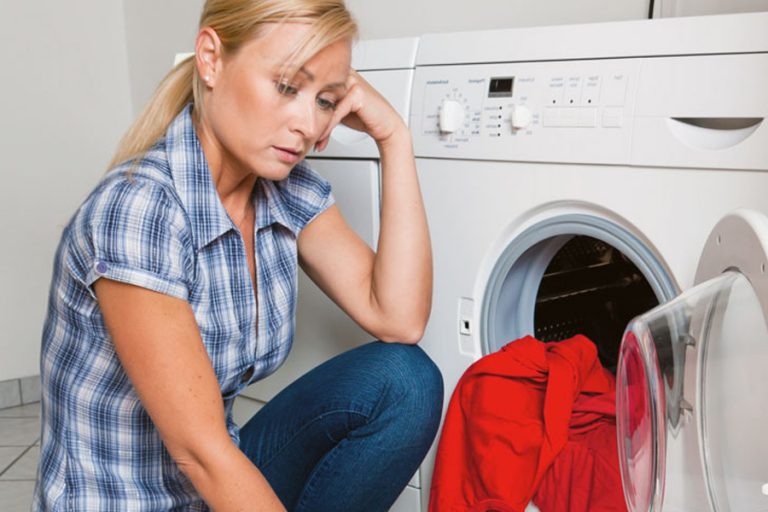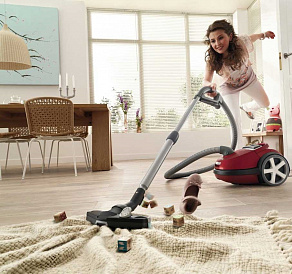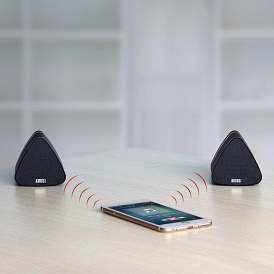8 main reasons why a washing machine is very noisy during the spin cycle
A slight noise of the washing machine when spinning is perfectly normal. In this mode, the drum accelerates to 1000 revolutions per minute (or even more), so that there is no getting rid of the buzz. Normal noise is quiet, uniform, with a slight “turbine effect” at the start of the spin procedure.
If the washing machine makes noise unevenly, very loudly, sometimes it even vibrates during the spin cycle - this signals first of all a breakdown. Damage can be as minor, which can be corrected independently; and quite serious, requiring a visit to the service center.

Possible reasons why a washing machine makes a lot of noise when spinning
The probable reasons due to which the existing washing machine starts to make a lot of noise when it goes into the spin mode are:
-
Underloading, overload, imbalance of loaded and dried laundry;
-
Improper placement directly "washers" in the room;
-
Preservation of transport fixers (bolts);
-
The ingress of a foreign object in the tank device;
-
Bearing wear on drum shaft;
-
Malfunction of shock-absorbing springs or shock absorbers;
-
Malfunction of the electric motor or abrasion of its brushes;
-
Malfunction or clogged drain pump.
As you can see, the reasons for the increased noise level during diagnostics can be very different. And only in some cases you can fix them yourself.
Cases when the washing machine rustles at spin because of improper use or installation
Before you grab a screwdriver or call a service specialist, you should pay attention to the nature of the noise. If the washing machine emits uneven knocks, clicks, as if something falls inside it, it hums weakly in the intervals between them, and it is clear that it does not gain standard turns - most likely this indicates underload or overload.
The washing machine is focused on working with a certain amount of linen. In the spin mode, she tries to distribute it evenly inside the drum so that when overclocked to 1000 revolutions per minute there is no imbalance or skew. If there are too few things in it, or there is one, but it is heavy (like sneakers), it is impossible to place them. Similarly, it happens if too many things are loaded.
This problem, of course, can be solved independently. It is necessary either to report things (if there are too few of them), or to get extra ones out (if there is too much). But sneakers and other shoes wringing in the "washer" or any centrifuge, in principle, is not recommended.
If the “washer” when drying wet clothes starts to buzz and vibrate strongly, or even “jump”, this indicates, first of all, improper installation. Check:
-
No misalignment. If it turns out that the washer is tilted in any direction, put it on a level;
-
No contact with the walls. "Washer" should stand at a distance of 2 cm to the nearest obstacle;
-
Floor resistance. If the floorboards under the unit are staggering, then you should rearrange the device.Or strengthen the floor.
-
If the washing machine makes a noise when you first start, it is necessary to immediately interrupt the established cycle and check whether all the transport bolts have been unscrewed. Remaining clips inside the unit may damage the drum. And, of course, they will cause a lot of noise, sharp “jumps” of the “washer” itself and an increased level of vibration.
These causes of increased noise during the spin cycle can be corrected by yourself. But in all the rest will require intervention service specialist.
Cases when the washing machine makes noise during the spin cycle and you need to call the master
"Washer" can make noise during the spin cycle and due to more serious damage. And in these cases you will need to contact the service center:
-
There is a foreign object between the drum and the inner wall of the tank. Most often there are “bones” from the bra, flash drives, keys and coins of large size. In this case, during centrifugation, a characteristic clank, crackling, squeaks and similar sounds are heard;
-
Bearing wearon which the drum pulley is located. This functional element is closed by an epiploon which, at the same time, also collapses over time. Water enters the bearing and it breaks. After that, the vibration is amplified, the noise becomes louder and “thinner” than usual, sometimes a rattle is also heard. In case of serious damage to the bearing, there are also leakages of varying intensity of the tank itself and the appearance of characteristic dark or rusty stains on clothes;
-
Worn or damaged shock absorber or springs. In this case, the “washer” begins not only to make more noise, but also to knock noticeably, and sometimes even to jump with a strong overclocking. Internal shocks can also be heard and drum skewed. The most striking sign of this breakdown is a significant increase in device vibration;
-
Damage to the drain pump. With such damage, it is not the washing machine drum that makes noise. Unpleasant sounds are heard "from below", low-quality discharge of waste water can also be observed. Breakage can be caused by a foreign object getting into the pump pump, or by a blown coil or damage to the impeller;
-
Motor wear. Breakdown is quite rare, but it is regularly observed in old or actively used devices. If the electric motor is worn out (its brushes are worn out), then it becomes unable to gain enough speed during centrifugation, the characteristic low noise comes from the motor, and sometimes sparks appear.
-
In rare cases, increased noise and vibration can also be caused the destruction or detachment of the counterweight; loosening the drum pulley; and a noise filter blade. But, regardless of the nature of the breakdown, it is definitely not recommended to repair it yourself.
When repairing in all the above situations, disassembly of the broken device is required. In addition, for some damage, the only way to fix the problem is to replace the damaged part. So self-repair can be not only ineffective, but also traumatic.
On your own, you can only clean the pump pump if it is dirty. But, again, the specific method of this repair is different for different models and manufacturers of household appliances.
So regardless of the nature of the damage, it is recommended to call a service technician who will identify the malfunction and fix it.






